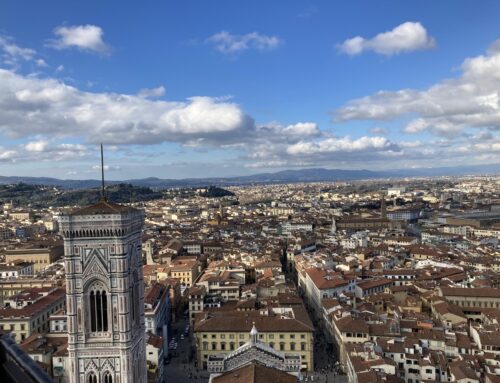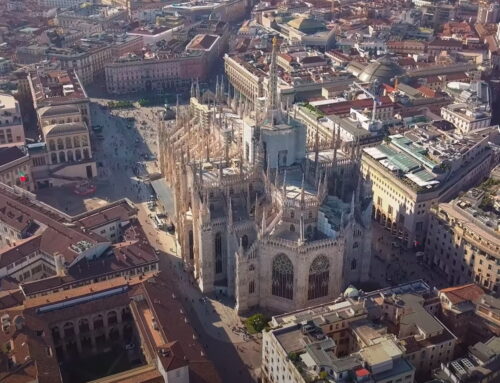Everything you need to know about traveling to Palermo, Sicily
Palermo is one of the most fascinating cities to visit in all of Europe and the Mediterranean. Capital of the autonomous region of Sicily, Palermo is a bucket list destination for any history buff.
We put this guide together so you know all the best things to see in Palermo…what to do, where to stay and when to go.
Let’s get to it!
Palermo, Sicily location and geography
Parts of the discussions on this page are derived from the Wikipedia page for Palermo.
Palermo is the capital of the autonomous region of Sicily. Sicily is the largest island in the Mediterranean Sea, and is one of the five autonomous regions of Italy.

The island of Sicily is also the southernmost region of Italy. The east coast of Sicily is located right at the toe of the boot of Italy.
Palermo is located at the northwest corner of the island, about 227 kilometers by car to the west of Messina. Messina is the closest city on Sicily to the Italian mainland.
In addition to being the capital of Sicily, Palermo is the most populated city in the region with a population of about 680,000. Palermo is easily accessible from the Italian mainland, as it is less than an hour by air from Rome, which is 426 kilometers, or 265 miles to the north.
As it was originally founded over 2,700 years ago, Palermo is effectively the cultural center of Sicily, and it serves as the economic and tourism hub of the island.
A brief history of Palermo

La Cala port – Originally built by the Phoenicians
There is evidence of human settlements near Palermo dating back to the Mesolithic period around BC.
In the 8th century BC, the Phoenicians arrived and built a settlement near the natural harbor of Palermo. The area grew rapidly, and eventually the Phoenicians developed a trading partnership with Carthage.
This relationship remained peaceful, until the Greeks arrived, and eventually sparked a war with Carthage for control of Sicily. At this time, the settlement became known as Panormos, due to the large size of the settlement.
By the middle of the 3rd century BC, the Carthaginians were driven from Sicily when Syracuse allied with Rome. The Romans besieged and conquered Panormos in 254 BC.
The remains of a number of Roman villas may be found throughout Palermo.
After Rome fell, Palermo and Sicily became the focus of numerous conquering armies due to the strategic location of the island and the natural harbor in Palermo.
First came the Vandals, followed soon by the Ostrogoths, and then the Byzantines.
In 831, Palermo fell under Arab control, and Muslim rule in Palermo lasted over 200 years.

Garibaldi Garden
The Arabs were then defeated by the Normans after a long siege of Palermo in 1072. Norman holdings in southern Italy and Sicily then became the Kingdom of Sicily, and Palermo was the capital.
By the early 1200s, Palermo became capital of a substantial empire under Frederick II, who became King of Sicily in 1198 and Holy Roman Emperor in 1220.
By the end of the 1200s, Sicily fell under Barcelona rule, and Palermo went into a period of decline.
From 1479 to 1713, Sicily was ruled by Spain. For about the next 150 years, there were tumultuous times for Sicily and Palermo, until Guiseppe Garibaldi conquered Palermo in 1860.
Following a referendum in 1861, Palermo and the rest of Sicily joined the Kingdom of Italy.
During World War II, Palermo was heavily bombed by the Allies until it was captured during the Allied invasion of Sicily in 1943.
In the last 100+ years, Palermo has notably struggled with the Sicilian Mafia. The mafia’s influence shows up primarily in areas of Palermo outside of the city’s historic and tourist areas.
Palermo Sicily Climate
Palermo has a mild climate in the Winter, but it can get very hot during the Summer months.
The average high temperature in January and February is the lowest it will be all year at 58 degrees and the average low during those months is 48 to 49 degrees. It never gets below freezing, and temperatures rarely drop below 40 degrees.
The average high temperature in July and August is 86 degrees with a peak average high of 87 during the first week of August.

The climate in Palermo is also somewhat dry, which is pretty obvious when viewing the landscape. However, there is a wet season that runs from November through about mid-February. This delivers about 2-3 inches of rain per month during that time frame.
The summers are then very dry, and this leads to trouble with wildfires outside of the city. In fact, in 2023 wildfires caused the airport to close early one afternoon in July.

What you should know before you go to Palermo Sicily
Here are some tidbits that you should know before traveling to Palermo, from the obvious to the not-so-obvious.
Currency: Euro
Language: Italian of course. While English is spoken by some, it is not spoken as much as in cities such as Rome and Florence. We highly recommend that you learn some Italian before you go. Many Sicilians will appreciate the effort. Rosetta Stone is a popular app for learning Italian.
Visa Requirements: For stays under 90 days, you do not need a Visa, but you will need your passport.
Electricity: Europe has different electrical outlets than what we have here in the US, so you will need an adapter.
Car Rentals: The historic area of Palermo is very walkable. However, if you intend to visit other towns in Sicily, the best way to travel is by car. The lone exception is if you want to head over to Cefalu, which is less than an hour by train. Otherwise, travel around Sicily is best done by car. In order to rent a car, you’ll need an international driver permit along with your driver’s license. If you do not have an international driver’s permit, head on over to your nearest AAA office.
For finding the best deals on rental cars, check out Discover Cars.
Flying to Palermo: The airport that serves Palermo and the west side of Sicily is located on the west coast of the island, about 40 minutes away. There are few cities in North America that offer direct flights to Palermo. The best way to get there is via Rome, but there are other major airports in Europe that offer connections to Sicily. At present, one to avoid is London Heathrow.
You can find many flight options here. You can also check out our tips for flying to Italy.
If you don’t intend to rent a car, and need transportation too, check out Kiwi Taxis.
The Trains: The train experience in Sicily is quite different than on the mainland of Italy. There are no high speed trains. The intercity trains do allow assigned seats and have fewer stops. Unfortunately, these do not run as often as the regional trains.
The regional trains are crowded, and the experience is like getting on a New York subway at rush hour. Therefore, travel on the trains with a lot of luggage is not recommended.
Lastly, train service to the west and south sides of Sicily from Palermo is spotty. The rail lines just do not take you to many places aside from the airport and Agrigento.
Travel Insurance: Anytime you plan on a trip overseas, you should consider purchasing travel insurance. Travel insurance can cover the cost of medical emergencies, lost baggage, unexpected trip cancellations, etc.
Travel Insurance Master can help you find the coverage you need for your trip.
When is the best time to go to Palermo Sicily?
The best time to go to Palermo, and Sicily, is Spring and Fall. The temperatures will not be so hot as you tour the city, and the best way to tour the city is on foot.
However, if you want to head up to Mondello Beach, the water will still be warm enough for swimming in the Fall. Just be sure to avoid the weekends as it will still get crowded.
If visiting the beaches in Sicily is one of your priorities, check out the 7 best beach towns in Sicily.
Keep in mind, Sicily is a beach destination for many Italians, so in July and August, the crowds at many of the popular beaches will be brutally crowded.

Mondello Beach
Best Things to do in Palermo Sicily

Ballaro Market
Palermo is known for its cuisine, and this includes its street food. With that in mind, one of the best things to do when you visit Palermo is wander through its open markets and along Via Maqueda.
There are several open markets in the historic district of Palermo, but the most popular among the locals and travelers alike are the Ballaro and Vucciria markets.
The Ballaro market (Mercato di Ballaro) is located in the south side of the city in a somewhat rundown neighborhood, which adds a bit to the charm.
La Vucciria is located in the Castellammare neighborhood near the piazza and church of San Domenico.
Via Maqueda runs from north to south in the historic district. At the north end you have the Teatro Massimo, the largest opera house in Italy, and at south end you will find the Mercato di Ballaro. About halfway, you will find the Quattro Canti, or the four corners of Palermo.
This is a great pedestrian only street most of the way where you will find small shops and restaurants, and its a great place to sample the famous Palermo street food.

Palermo Cathedral
It is absolutely a must to try an arancini, which is a fried rice ball stuffed with cheese, cheese and vegetables or cheese and ham.
Palermo is well known for its beautiful churches, so you will definitely want to take the time to pay a few of these a visit.
Among the must-see churches are San Domenico, Palermo Cathedral, Church of San Mateo al Cassero, and Chiesa del Gesu.
When you have the opportunity, you will also want to take a stroll over by the waterfront. There you will find the La Cala port, which was originally built by the Phoenicians.
Nearby is the beautiful Giardini Garibaldi, named after Guisseppe Garibaldi, one of the founders of the Kingdom of Italy in the 19th century, which eventually became the Republic of Italy as it stands today.
Lastly, if you are visiting Palermo during the Summer and into early Fall, check out Mondello Beach, which is about ten miles north of the historic area of Palermo.
Keep in mind, during the peak of the summer beach season, it will be quite crowded. But, it is definitely worth your while to enjoy a beautiful sandy beach next to the turquoise waters of the Mediterranean.
Where to stay in Palermo Sicily
If you intend to take a couple days to explore the historic center of Palermo, along with the areas near the marina, we recommend to particular neighborhoods.
The first is the Il Capo district, which is just a couple blocks to the west of the Via Maqueda. Here you will find a number of smaller B&B type hotels that put you very close to all of the major sites.
We stayed at B&B Sant’Agostino, and would happily go back. We became fast friends with the hotel manager, Fanny, a lovely lady, who goes out of her way to make your stay as pleasant as possible.
If you prefer a larger hotel, consider staying in the Borgo Vecchio neighborhood a little bit to the north of Teatro Massimo. You can search for choices using the form below.





